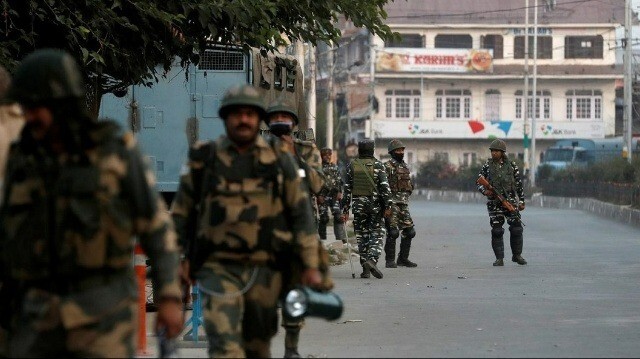Tight security in place as Hindu pilgrimage begins in Kashmir

Tens of thousands of Hindus trek, horse-ride or take a chopper ride to the Himalayan cave named Amarnath, located at an altitude of about 3,888 meters (12,756 feet). Hindus believe a naturally occurring ice stalagmite in the cave, believed to have been discovered by a Muslim shepherd in the nineteenth century, to be a manifestation of Hindu deity Shiva.
Before the 90s, the pilgrimage was a low-key affair lasting for 15-30 days, but after 1990, when the raging anti-India insurgency started, the number of pilgrims has been growing steadily, especially after the formation in the year 2000 of a board that oversees the conduct of the pilgrimage.
The rush has been aided by the state-sponsored infrastructure build-up, some of it in environmentally fragile areas, which has sparked concern from environmentalists and which had triggered an agitation in 2008 after 50 acres of state forest land was transferred to the board. The land transfer order was then withdrawn and the agitation led to the fall of then local coalition government.
In 2005, the board extended the yatra (pilgrimage) to two months, but weather sometimes forces the authorities to curtail the duration.
Last year, 450,000 Hindus from various parts of India visited the cave. This year's pilgrimage will end on Aug. 19. The local government has set up several transit accommodations along the two routes of the pilgrimage, where pilgrims stay before embarking on the travel towards the cave.
This year's pilgrimage is taking place against the backdrop of an attack on a bus carrying Hindu pilgrims in Jammu province on June 9. The bus had plunged into a gorge after the driver lost control over it following firing by suspected militants, leading to death of nine and injuries to dozens of the passengers.
The government forces conducted mock security drills near the camps housing the pilgrims and along the pilgrimage routes. Jammu and Kashmir Lt. Governor Manoj Sinha visited one of the two main base camps in Kashmir and directed officials to “coordinate with each other for better security and management.”
No comments:
Post a Comment